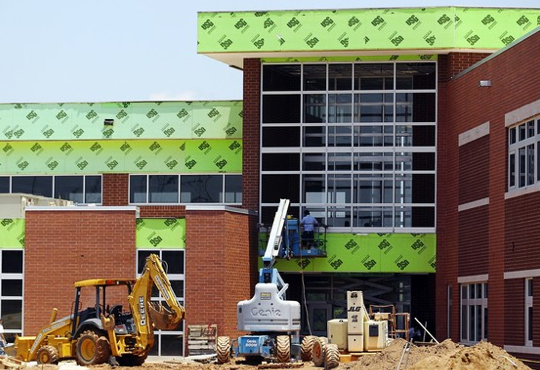Update: After a week in legislative limbo, a bill that would have placed a $4.3 billion school construction bond on the November ballot is now officially dead. With a veto by Gov. Jerry Brown likely, Assemblywoman Joan Buchanan, D-Alamo, pulled AB 2235, which she co-sponsored. In a statement on Tuesday, Buchanan, who chairs the Assembly Education Committee, said that Brown made it clear that he did not want a school bond competing with a $7.5 billion water bond and his proposal for a rainy day fund on the fall ballot. She also said that officials from the Department of Finance indicated that the governor questions whether the state has a role in funding future school building projects. Stating her belief that funding school facilities is part of the state’s constitutional responsibility to educate children, Buchanan said that “the ultimate decision” on this issue “may rest with the courts.” – Updated, Aug. 19.
A slimmed-down school construction bond measure approved by a state Senate committee on Thursday faces an uncertain future.
Even if the full Senate approves the measure next week, there is a good chance that Gov. Jerry Brown will veto it. And, even if he were to sign the bill, it might already be too late to get the proposal on this November’s ballot for voter approval.
By a 7-0 vote, the Senate Appropriations Committee unanimously approved Assembly Bill 2235, creating a bond for $4.3 billion – a little less than half of the $9 billion in the original bill. The bulk would go toward new construction ($1.23 billion) and renovations ($2.47 billion) for K-12 schools, with $600 million divided equally among community colleges, the University of California and California State University campuses.
Up to 5 percent of the K-12 portion would be allocated for charter schools. As in the past, the K-12 portion of state construction money would be matched by school districts, which would pay half of the cost for new construction, with the state paying 60 cents out of every dollar for school renovations.
Voters last approved a state bond for school construction, for $10.4 billion, in 2006, and the state agency that administers the allocations has run out of money. The major education organizations representing teachers, school boards and administrators, and the Coalition for Adequate School Housing, representing school districts, contractors and architects, have pressed for the bill, which is co-sponsored by Assemblymembers Joan Buchanan, D-Alamo, and Curt Hagman, R-Chino Hills.
It may, however, be too late for voters to get their say. The Legislature already extended the deadline for propositions to be included in the ballot guide for the November election when it passed a $7.5 billion water bond on Wednesday. A school construction bond measure would have to be written up in a supplemental ballot guide, and it’s unclear whether final passage next week would be too late. Legislative aides gave conflicting opinions regarding whether the deadline for getting it on the ballot had already passed. The Secretary of State’s Office, which will determine the drop-dead deadline, didn’t respond to a request for a comment.
Brown led negotiations for the water bond, his priority for the legislative session, but H.D. Palmer, spokesman for the Department of Finance, said in an email Thursday that Brown remains opposed to another school bond, even the smaller version approved by the Senate committee. A Department of Finance analysis of the bill said that the administration “is focused on paying down existing obligations and saving for a rainy day” – not adding to debt service, “crowding out other state priorities.” The state currently is paying $3 billion annually in debt service for existing school bonds; a new $4.3 billion bond would add $280 million per year to that, the analysis estimates.
Brown, in his state budget message, also has complained that the process for getting school construction projects approved is too complex, that the first-come, first-served basis for getting matching state money favors large districts with sizable facilities staffs, and that standard building requirements may not encourage non-traditional ways to educate students using less space and fewer facilities.
Buchanan has said she’s willing to accommodate the governor’s concerns, but that the administration has not offered specific solutions to address them.
To get more reports like this one, click here to sign up for EdSource’s no-cost daily email on latest developments in education.
